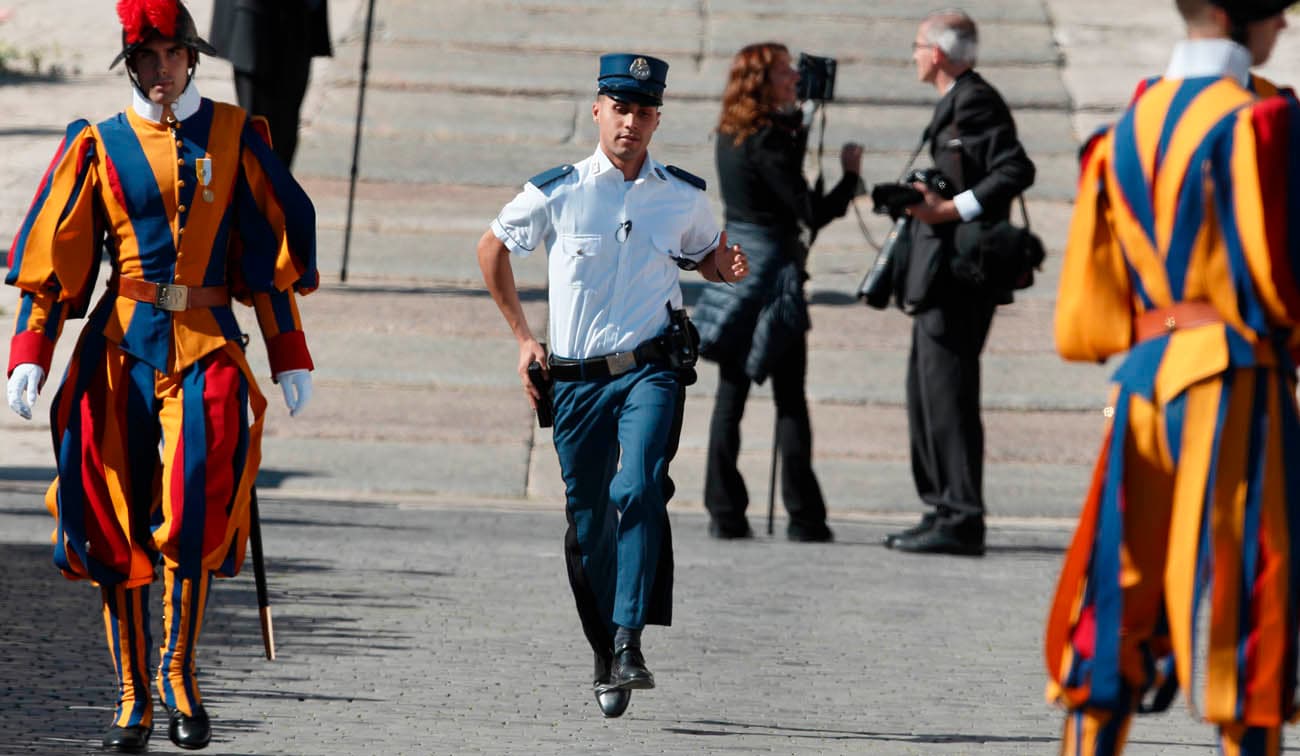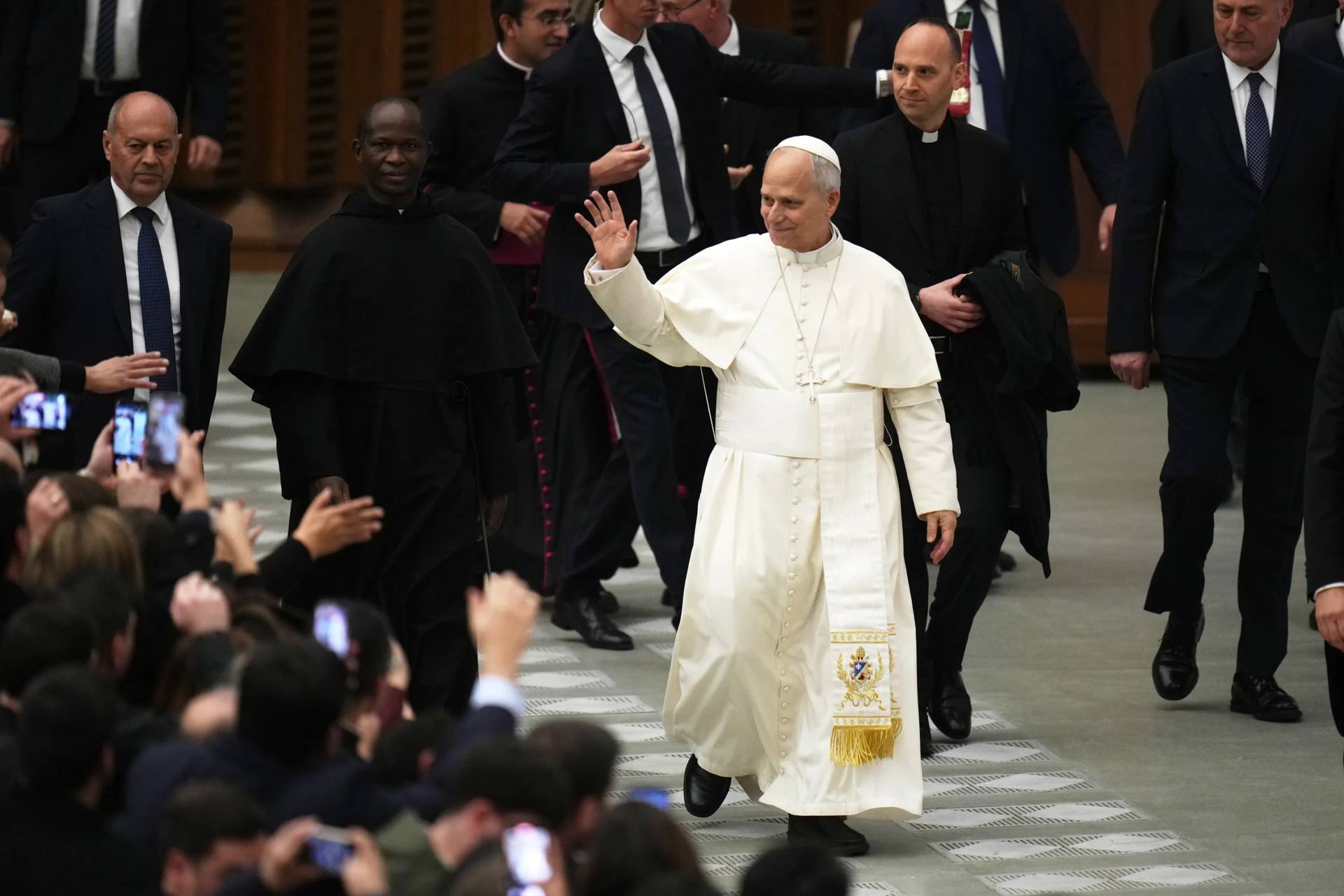ROME – Typically during the Lenten season, things slow down a bit in the Vatican as preparations for the major events of Holy Week begin in earnest. In the absence of a single major dramatic narrative, here are a few vignettes providing the sights and sounds of recent days.
* * *
A group of some 5,000 Italian ex-priests who’ve gone on to become married is mobilizing in advance of October’s first Synod of Bishops on Synodality to advocate for making celibacy optional in the Catholic Church.
The group notes that calls to rethink the celibacy requirement have circulated in various Catholic arenas of late, from the pope’s own Synod for the Amazon to the recently concluded “synodal path” of the German Catholic Church.
Called the “Association of Married Priests,” the group elected a new president March 20, a former priest from Naples named Natalino Mele.
“In view of the synod, we’re preparing our proposal, which obviously won’t be the only one,” Mele said. “What’s happening in Germany is reason for hope … it’s an acceleration towards change.”
In a recent interview with an Argentine news agency called Infobae, Pope Francis addressed the issue of priestly celibacy. He referred to it as a “provisional” discipline in the Latin church, which is not essential to the priesthood.
When asked whether the celibacy requirement could be changed, the pontiff responded positively.
“Yes, yes,” he said. “In fact, everyone in the Eastern Church is married, or those who want to. There they make a choice. Before ordination, (they have) the choice to marry or to be celibate.”
At the same time, Francis expressed skepticism that lifting the celibacy requirement would increase the number of candidates for the priesthood.
Two days later, in another interview with a different Argentine news site, Francis made clear that no change to the celibacy requirement is in the short-term works.
“I am not yet ready to review it, but obviously it is a question of discipline, which today is there and tomorrow may not be, and has nothing to do with dogma,” the pope said.
* * *
In a collaborative project between the Vatican and the Italian state railway system, visitors to the Vatican from now until November will be able to see the major sites by train, taking advantage of a Saturday-only excursion from the rarely used papal train station on Vatican grounds.
The special ticket includes access to the Vatican museum and gardens, as well as the Sistine Chapel and the museum spaces of the Apostolic Palace in St. Peter’s Square, followed by a ride on an all-electric train to the former papal summer residence at Castel Gandolfo, located roughly 20 miles outside Rome near Lake Albano.
At Castel Gandolfo, visitors will be able to tour the interior of the former papal palace as well as the extensive botanical and agricultural operations on the surrounding grounds.
The special train tour, which is a joint project of the Vatican Museums and the Italian state railway system, is available every Saturday until Nov. 4. It departs for Castel Gandolfo at 11:00 a.m. and returns at 5:00 p.m., and has been in operation since 2015.
The Vatican Railway Station was constructed in 1934, and with only 300 meters of tracks, it’s considered the shortest national railway system in the world. Its primary function has been to move goods in and out of the Vatican City State, and is rarely used for passengers.
Twice, however, in 2002 and 2011, Popes John Paul II and Benedict XVI used the railway to travel from the Vatican to Assisi for inter-faith summits, inviting the other participants to join them aboard the train.
* * *
Italy’s Postal Police, who often handle fraud cases, have arrested an unnamed 54-year-old man from Frascati, a town roughly 30 miles south of the center of Rome, for scamming an unemployed Italian youth and his father by promising to get the young man a job with the Vatican Gendarmes in exchange for money.
Numbering roughly 130 personnel, the Gendarmes are the primary police and security force for the Vatican City State.
According to the Postal Police, the scammer presented himself to the young man as a member of the Italian Carabinieri, or military police, with connections with the Gendarmes. The scammer then engineered an exchange of fake emails with the Gendarmes, including false entry forms, a certificate of hiring, and even an appointment for a uniform fitting.
Convinced that the deal was legitimate, the young man then presented himself at the Vatican headquarters of the Gendarmes, only to learn that he’d been duped. The Gendarmes alerted the cyber crimes division of the Postal Police, who were able to identify and arrest the perpetrator.
According to local media reports, when the scammer was arrested several items were discovered and confiscated which suggested a pattern of impersonating members of law enforcement agencies, including two replica pistols with the usual safety caps and a fake FBI badge.
Traditionally, entry requirements for the Gendarmes have included that an applicant must be a male, unmarried, aged 21 to 24, in good health, at 5’-8” in height, a high school graduate and a practicing Catholic. Though other military or police experience isn’t required, a recommendation from Italian security agencies is often helpful, potentially explaining the appeal of the scam.
* * *
Sometime early Tuesday, the seemingly menacing phrase Vaticano morti, or “Vatican dead,” was spray painted on the central façade of the renowned Basilica of the Most Holy Annunciation of Vastato, a church which, over the centuries, has drawn tributes from such luminaries as Montesquieu and Charles Dickens.
The graffiti, which was reported to police in the early hours of Tuesday morning by officials at the basilica, was not accompanied by any symbol or name that would suggest responsibility. However, it came just a day after anarchists had smeared slogans on a nearby post office in protest of Italy’s “hard prison” regime.
That form of incarceration involves solitary confinement for 22 out of 24 hours every day, with two hours of supervised time outside their cell and one family visit a month. It’s usually employed for mafia bosses to prevent them from continuing to run their criminal empires, but it’s also currently being employed on an Italian anarchist named Alfredo Cospito, who’s engaged in a hunger strike to protest the treatment.
Cospito was originally convicted for shooting a nuclear energy official in the leg, and later drew a life sentence for setting off two bombs in front of a police academy in Turin in 2006. No one was injured, but experts concluded the bombs were designed to kill.
Cospito launched a hunger strike in October to protest his treatment, reportedly losing more than 100 pounds to date and moving in and out of the prison hospital.
His hunger strike has triggered widespread protest by anarchist movements in Italy, including a March 18 protest in Rome in which 16 cars belonging to the national postal service were burned. While protests so far have been mostly directed at government personnel and structures, the graffiti in Genoa has generated fears that church property and personnel could also become a target.














